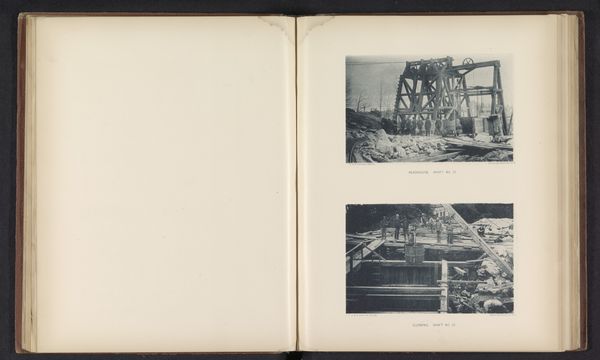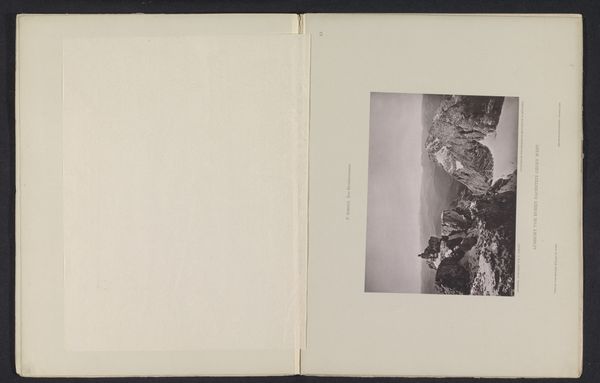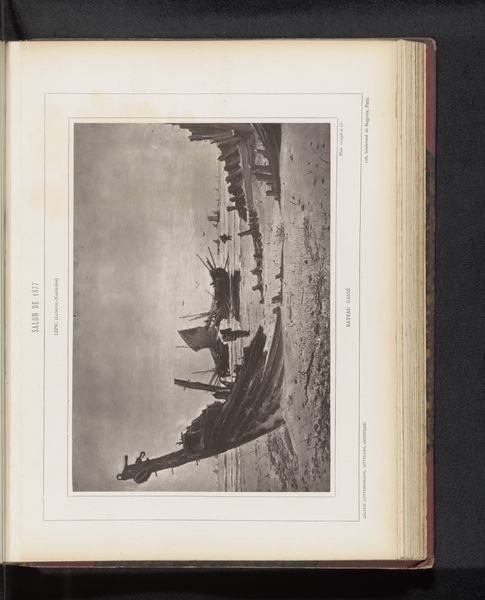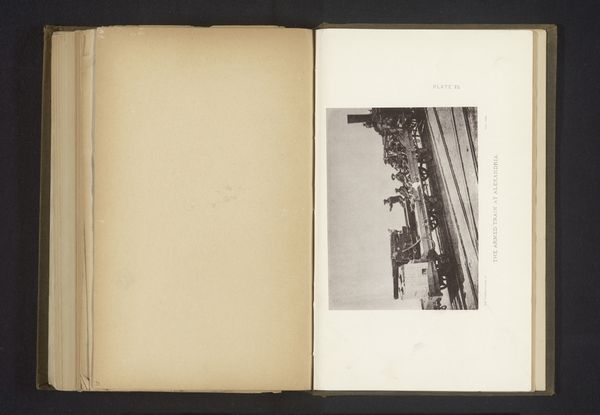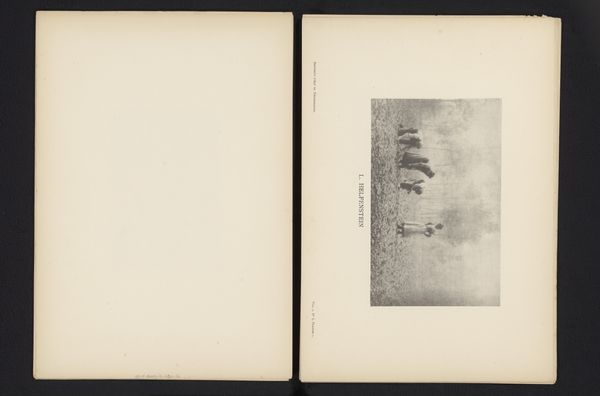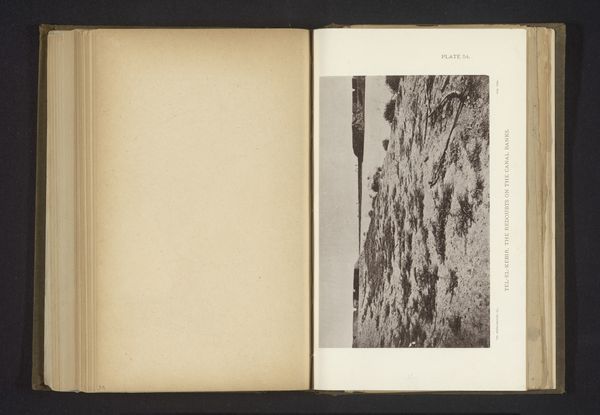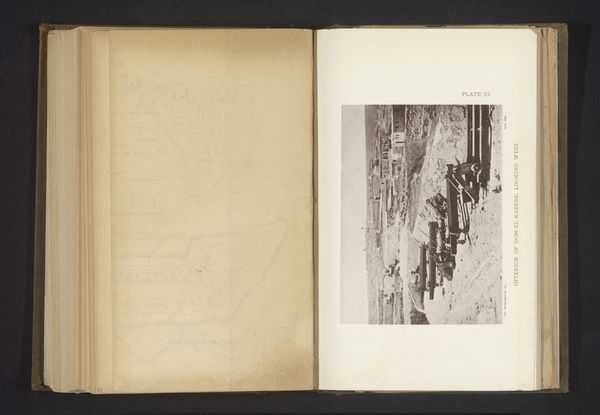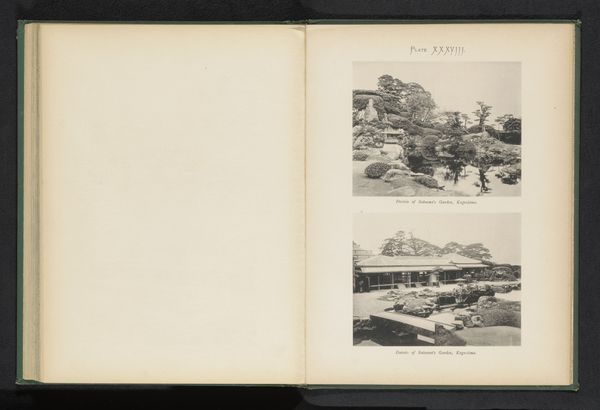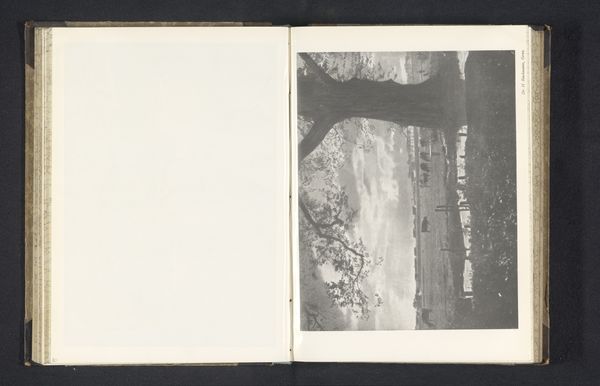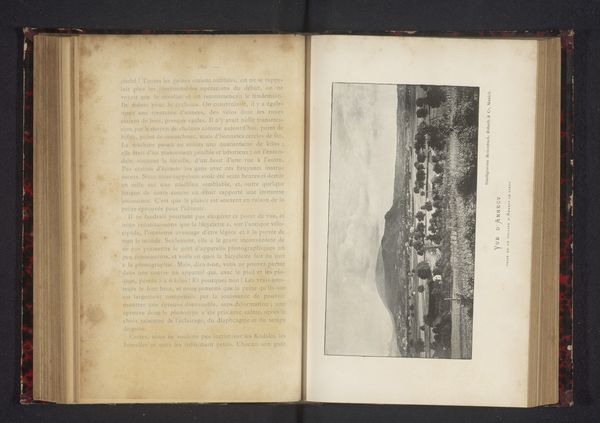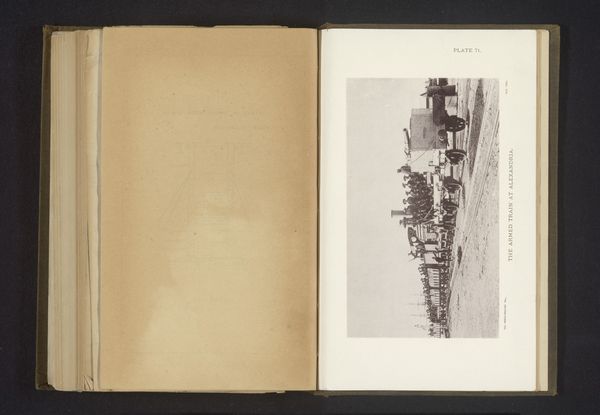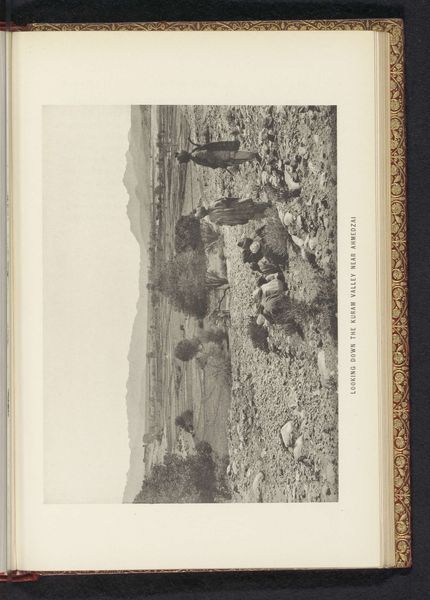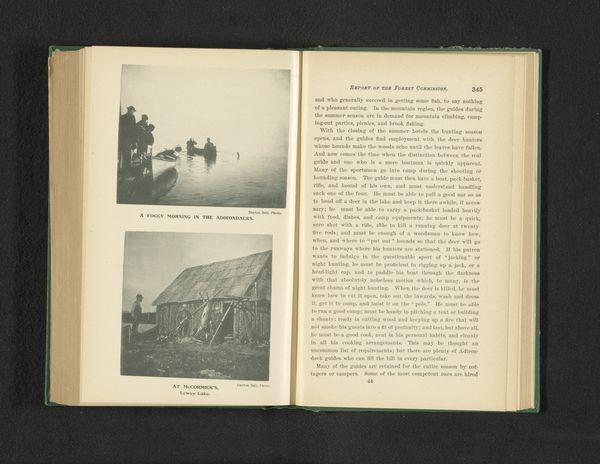
aged paper
homemade paper
paper non-digital material
paperlike
sketch book
paper texture
personal sketchbook
paper medium
sketchbook art
historical font
Dimensions: height 108 mm, width 120 mm
Copyright: Rijks Museum: Open Domain
Curator: Let’s delve into this interesting page from what seems to be a sketchbook or album. On the left we see an image titled "Groep kinderen bij een kluizenaar in Constantine, Algerije" by Albert Morin, created before 1896. It presents a scene of children gathered around a hermit. What are your immediate thoughts? Editor: Hmm, my first impression is quietude and a touch of melancholic curiosity. The scene feels staged, almost performative. And the vintage print lends an air of nostalgia, like a faded photograph from a relative’s forgotten travels. Curator: Yes, that’s astute. We can look at this image through the lens of colonial power dynamics. Who is represented, and who is doing the representing? Consider Morin, likely a European artist, capturing this interaction in Algeria. The gazes of the children, the implied power of the "hermit"... Editor: The hermit… he's the focus, clearly, but what is he offering? Wisdom? Treats? It's such an odd tableau. There’s an opacity to the moment. Is it supposed to feel exotic, maybe a little forbidden? It feels loaded! I keep imagining what sounds filled this space back then. Curator: Exactly! And how does this visual contribute to the prevailing Orientalist narratives of the time? How did images like this shape perceptions of North Africa, the 'other,' for European audiences? Think of the gaze, who holds it, who's subjected to it? How are we seeing it today, differently? Editor: Right! And then look at the medium—a vintage book page! We need to ask ourselves, who was this album created for? To impress guests at the coffee table with glimpses into far-flung lands? Maybe it was created to present these photographs alongside another photograph to showcase its quality, or perhaps something as banal as advertising the album itself? So many questions... Curator: The act of framing the hermit as a spectacle for both the artist and, eventually, the viewer is what’s at stake. We need to question the very ethics of such representation and acknowledge the problematic legacy. Editor: It’s wild how much is buried in seemingly simple snapshots. So glad we looked at it, but honestly it made my head hurt just a little... Curator: These are not easy subjects. But engaging with them allows us to better understand both history and our present. And it’s only by confronting these images head-on that we start dismantling their perpetuation of damaging perspectives.
Comments
No comments
Be the first to comment and join the conversation on the ultimate creative platform.
